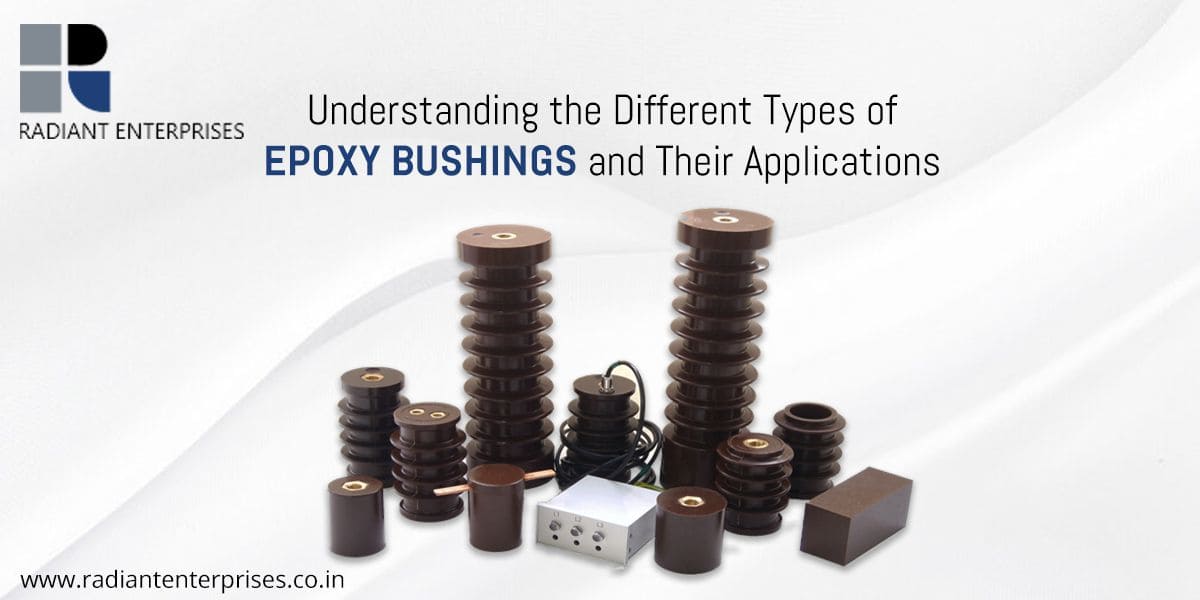
Fill all information details to consult with us to get services from us

Epoxy bushings are widely used in India in various electrical equipment, including transformers, switchgear, circuit breakers, and capacitors. The demand for epoxy bushings in India has been increasing in recent years due to the growth of the power sector and the need for reliable and efficient electrical equipment.
Several Indian companies manufacture and supply epoxy bushings to the domestic market and for export. Some leading companies in India that produce epoxy bushings include ABB India, Bharat Heavy Electricals Limited (BHEL), Radiant Enterprises, and Siemens India. These companies have state-of-the-art manufacturing facilities and adhere to strict quality standards to ensure the production of high-quality epoxy bushings.
The Indian government has also taken several initiatives to promote using epoxy bushings in electrical equipment. The Bureau of Indian Standards (BIS) has set standards for epoxy bushings and other electrical components to ensure their safety and reliability. The government has also implemented various schemes to encourage the adoption of energy-efficient electrical equipment, increasing demand for epoxy bushings and other insulation components.
One of the major applications of epoxy bushings in India is in the power transmission and distribution sector. India has rapidly expanded its power transmission and distribution infrastructure to meet the growing electricity demand. Epoxy bushings are used in high voltage transformers, switchgear, and other equipment to provide insulation and support to high voltage conductors, ensuring safe and efficient electricity transmission.
Epoxy bushings are also widely used in industrial applications such as motor control centres, variable frequency drives, and power distribution units. They are essential in constructing these electrical systems, providing insulation and support for high voltage conductors.
In addition, epoxy bushings are used in the railway industry in India. They are used in electrifying railway lines and constructing locomotives and rolling stock. The use of epoxy bushings in the railway industry has increased recently. The Indian Railways has been investing in the electrification of its network to reduce its dependence on fossil fuels.
In conclusion, epoxy bushings are widely used in India in a variety of electrical equipment, and the demand for these components is
Epoxy bushings are a crucial component of electrical equipment, providing insulation and support for high voltage conductors. Several types of epoxy bushings are available, each with unique properties and applications. This blog will discuss the different types of epoxy bushings and their applications.
Solid epoxy bushings are made of a single piece of epoxy resin, which provides excellent electrical insulation and mechanical strength. They are typically used in transformers and other electrical equipment with high voltage and currents. Solid epoxy bushings are also ideal for limited space applications, as they can be made to very small dimensions.
Split epoxy bushings are designed to be installed around an existing conductor or cable without the need to remove the conductor. They consist of two halves joined with bolts or clips and can be easily installed in the field. Split epoxy bushings are commonly used in power transmission and distribution systems, providing a cost-effective solution for upgrading existing equipment.
Flange mount epoxy bushings are designed to be mounted directly onto a surface, such as a transformer tank or switchgear enclosure. They have a flange that allows them to be bolted or welded in place, providing a secure and reliable connection. Flange mount epoxy bushings are commonly used in high voltage transformers and other equipment requiring strong and stable mounting.
Threaded epoxy bushings are designed to be installed into a threaded hole or stud, providing a secure and reliable connection. They are commonly used in high voltage equipment, such as circuit breakers, providing a secure connection between the conductor and the equipment. Threaded epoxy bushings are also used in high voltage capacitors and other equipment requiring a threaded connection.
Tapered epoxy bushings are designed to be installed in a tapered hole, providing a secure and tight fit. They are commonly used in high voltage transformers and other equipment requiring a secure connection. Tapered epoxy bushings can be manufactured in various sizes and shapes to suit different applications.
Radial epoxy bushings are designed to provide support and insulation for bent or curved conductors. They are typically used in high voltage transformers and other equipment where conductors must be bent or curved to fit into a tight space. Radial epoxy bushings can be manufactured to suit a range of angles and radii, providing a flexible and reliable solution.
Elbow epoxy bushings are designed to be installed at the junction of two conductors, providing insulation and support for the connection. They are commonly used in high voltage equipment such as transformers and switchgear, where connections between conductors must be insulated and supported. Elbow epoxy bushings can be manufactured in various angles and sizes to suit different applications.
Epoxy bushings are a crucial component of electrical equipment, providing insulation and support for high voltage conductors. There are several types of epoxy bushings available, each with unique properties and applications. Solid, split, flange mount, threaded, tapered, radial, and elbow epoxy bushings are all commonly used in high voltage equipment, providing various solutions for different applications. Electrical engineers and equipment designers can select the right bushing for their specific needs by understanding the different types of epoxy bushings and their applications, ensuring reliable and efficient performance.